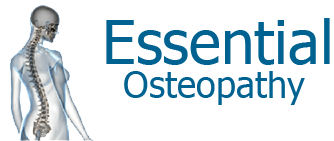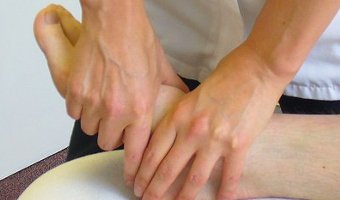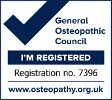Pregnancy & Pelvic girdle pain
We Osteopaths are not unused to treating pregnant patients with back pain and sciatica symptoms (click on the word sciatica to read the blog article) however pregnancy adds other dimensions that need to be considered. As the pregnancy progresses the uterus increases in size and both the soft-tissue and the joints of the hips, pelvis and low back all have to adjust their relative positions to accommodate the change. The sciatic nerve, exiting each side of the lumbar spine and travelling down through the pelvic area to supply the legs, can be affected greatly, particularly during the last 3 months of pregnancy when the centre of gravity of the mother moves forward as the weight of the baby increases. This causes an increased curve in the bottom of the back (the lumbar spine) which can cause compression on the sciatic nerve as it leaves the spine. The sciatic nerve can also be compressed by a number of soft-tissues in the buttock, such as the pirformis muscle, especially as the postural muscles in the buttock muscles try to counter-act the postural shift forward. All these sciatic nerve pressure points can cause leg and back pain.
So it is up to the Osteopath to identify where along the path of the sciatic nerve the compression is taking place and take the stress off the spine and pelvis with conservative treatment. Simultaneously, the Osteopath can treat any other musculo-skeletal issues that may be present – such as symphysis pubis dysfunction or pelvic girdle pain (SPD/PGP) or mid to upper back pain – and explain in more detail the cause of the symptoms and discuss the best ways to relieve them with stretches, exercises and other adjuncts.
Specifically, Symphysis Pubis Dysfunction (SPD) or Pelvic Girdle Pain (PGP) is most often related to pregnancy and childbirth and is normally due to excessive movement of the bones of the joint at the front of the pelvis (symphysis pubis). It is linked with misalignment of the pelvis and general pelvic-girdle pain (SPD and PGP are terms that are used interchangeably). It is quite a common problem among pregnant women with 1 in 4 experiencing some level of pelvic-girdle pain.
People with SPD or PGP may experience pain in the sacroiliac joint(s) or low back, the front of the pelvis (symphysis pubis), the groin or down the inside of the legs. Most often these conditions occur due to postural changes combined with an increase of the presence of the hormone relaxin which causes all the joints in the body to relax in preparation for the birth of the baby, however sometimes they are caused by old injuries and imbalances in the pelvic area.
Treatment usually involves realigning the pelvis, rebalancing the ligaments of the three key joints of the pelvis (the two sacroiliac joints and the symphysis pubis) and addressing any muscle or joint issues that may have arisen in the spine. This, together with advice on exercises and management of the condition, are usually sufficient to ease the discomfort and restore the patient to full functionality with little pain. If the problem continues after the birth of the baby, treatment may need to continue for a short while to ensure that it doesn’t return in future pregnancies.
Najette’s testimonial giving an example of Fiona’s treatment of Pelvic Girdle Pain and low back pain (click here for more testimonials):
“I was treated by Fiona in 2011 during my pregnancy and she was able to treat both my lower back pain and pelvic dysfunction during this time. I have suffered from back pain for a number of years but with the extra pressure on my body during pregnancy it was vital to be treated regularly. Fiona is very personable and she takes an interest in you which makes it easy to trust her. She also saw my son after he was born and I did not hesitate to take him to be treated with cranial osteopathy given the positive treatment I had received from her myself. I’m not sure if it is a coincidence but he started sleeping throughout the night after he went to the clinic.
I would not hesitate to recommend her and have done already to numerous people. Fiona is a fantastic practitioner who clearly takes pride in her job.”
Najette, HR Manager
Don’t forget that you can also bring your baby in for a check up/treatment (ideally from 6 weeks onwards to let everything settle) – cranial osteopathy can work wonders on colicky symptoms, gastric reflux, sleeping problems and much more.
Click here to view my blog article relating to Pelvic Girdle Pain and other pregnancy related problems.







